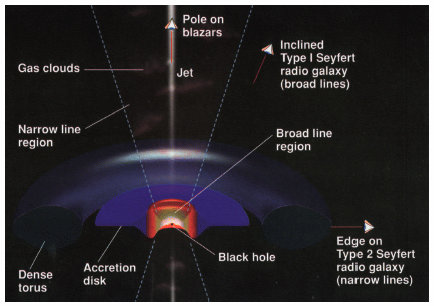Difference between revisions of "Studying AGN"
m |
m |
||
| Line 6: | Line 6: | ||
This link has a bit more background on AGN in general. No need to understand all the details but I think it gives a nice history of these objects. http://nedwww.ipac.caltech.edu/level5/Cambridge/frames.html | This link has a bit more background on AGN in general. No need to understand all the details but I think it gives a nice history of these objects. http://nedwww.ipac.caltech.edu/level5/Cambridge/frames.html | ||
| + | |||
| + | =AGN key points= | ||
| + | [[image:agn1.gif]] | ||
Revision as of 10:36, 12 August 2010
Introductory comments from Varoujan
I have been very interested in Active Galactic Nuclei (AGN) for some time. Here is a brief introduction to the key points.
Basically AGN are galaxies that emit an excess of light from their centers beyond the sum total of light that should be coming from their central stars. It was initially postulated that this was due to a great deal of star formation but over time it was realized that it would be impossible to have that much star formation in such a small volume. The accepted paradigm became where a large amount of gas was flowing into a supermassive black hole at the center of an AGN. As the gas flows in, it forms an accretion disk and the friction of the gas with itself as it spirals in causes the disk to heat up and emit a lot of light, especially in the UV. Then, any dust that surrounds the disk absorbs that light and re-emits it in the infrared.
This link has a bit more background on AGN in general. No need to understand all the details but I think it gives a nice history of these objects. http://nedwww.ipac.caltech.edu/level5/Cambridge/frames.html
